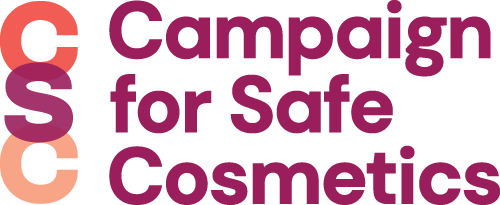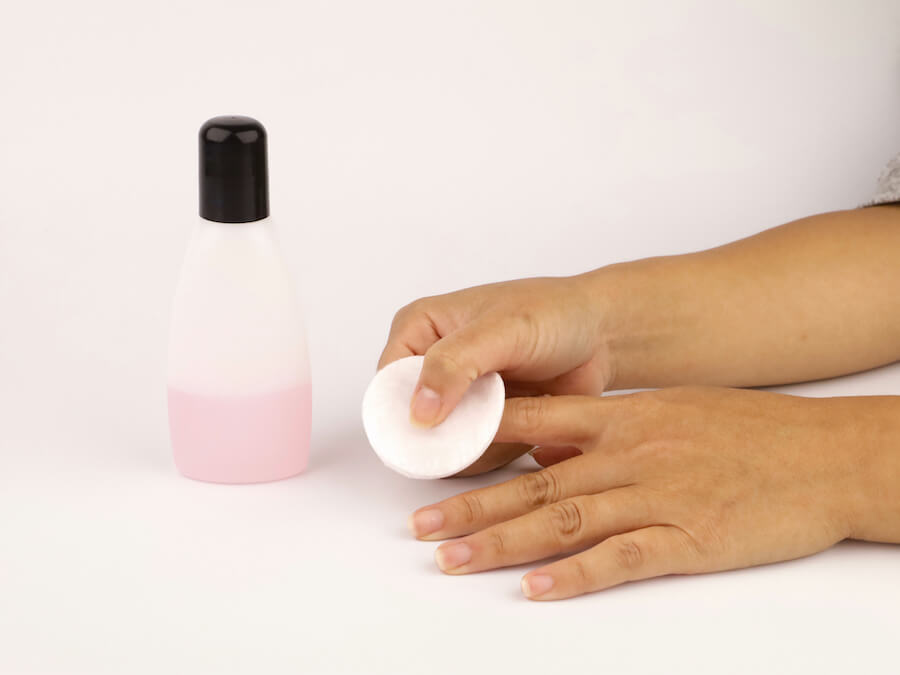[1] INCHEM. International Programme on Chemical Saftey. Methyl Ethyl Ketone. Available online: http://www.inchem.org/documents/ehc/ehc/ehc143.htm. Accessed May 1, 2022.
[2] INCHEM. International Programme on Chemical Safety. N-Methyl-2-Pyrrolidone. Available online: http://www.inchem.org/documents/cicads/cicads/cicad35.htm#2.0. Accessed May 1, 2022.
[3] INCHEM. International Programme on Chemical Safety. Methyl Isobutyl Ketone. Available online: http://www.inchem.org/documents/ehc/ehc/ehc117.htm. Accessed May 1, 2022.
[4] Hjelm EW, Hagberg M, Iregren A, and Löf A. “Exposure to methyl isobutyl ketone: toxicokinetics and occurrence of irritative and CNS symptoms in man.” Int. Arch. Occup. Environ. Health. 1990. 62: 19-26 Print.
[5] Silverman L, Schulte HF, and First MW. “Further studies on sensory response to certain industrial solvent vapors.” J. ind. Hyg. Toxicol. 1946. 28: 262-266. Print.
[6] Armeli G, Linari F, and Matorano G. “Clinical and haematochemical examinations in workers exposed to the action of a higher ketone (MIBK) repeated after 5 years.” Lav. Um. 1968. 20:418-424. Print.
[7] NTP Technical Report on the Toxicology and Carcinogenesis Studies of Methyl Isobutyl Ketone in F344/N Rats and B6C3F1 Mice. Available online: http://ntp.niehs.nih.gov/ntp/htdocs/lt_rpts/tr538.pdf. Accessed May 1, 2022.
[8] Seely JC, Haseman JK, Nyska A, Wolf DC, Everitt JI, and Hailey JR. “The effect of chronic progressive nephropathy on the incidence of renal tubule celle neoplasms in control male F344 rats.” Toxicol Pathol. 2002 Nov-Dec;30(6):681-6. Print.
[9] Johnson W Jr. “Safety assessment of MIBK (methyl isobutyl ketone).” Int J Toxicol. 2004;23 Suppl 1:29-57. Print.
[10] Borghoff SJ, Poet TS, Green S, Davis J, Hughes B, Mensing T, Sarang SS, Lynch AM, and Hard GC. “Methyl isobutyl ketone exposure-related increases in specific measures of α2u-globulin (α2u) nephropathy in male rats along with in vitro evidence of reversible protein binding.” Toxicology. 2015 Jul 3;333:1-13. doi: 10.1016/j.tox.2015.02.003. Epub 2015 Mar 19. Print.
[11] Mitran E, Callender T, Orha B, Dragnea P, and Botezatu G. “Neurotoxicity associated with occupational exposure to acetone, methyl ethyl ketone, and cyclohexanone.” Environ Res. 1997;73(1-2):181-8. Print.
[12] Oleru UG and Onyekwere C. “Exposures to polyvinyl chloride, methyl ketone and other chemicals. The pulmonary and non-pulmonary effect.” Int Arch Occup Environ Health. 1992;63(7):503-7. Print.
[13] Spirtas R, Stewart PA, Lee JS, Marano DE, Forbes CD, Grauman DJ, Pettigrew HM, Blair A, Hoover RN, and Cohen JL. “Retrospective cohort mortality study of workers at an aircraft maintenance facility. I. Epidemiological results.” Br J Ind Med. 1991 Aug;48(8):515-30. Print.
[14] Blair A, Hartge P, Stewart PA, McAdams M, and Lubin J. “Mortality and cancer incidence of aircraft maintenance workers exposed to trichloroethylene and other organic solvents and chemicals: extended follow-up.” Occup Environ Med 1998;55:161-171. Print.
[15] Deacon MM, Pilny MD, John JA, Schwetz BA, Murray FJ, Yakel HO, and Kuna RA. “Embryo- and fetotoxicity of inhaled methyl ethyl ketone in rats.” Toxicol Appl Pharmacol. 1981 Jul;59(3):620-2. Print.
[16] Schwetz BA, Leong BK, and Gehring PJ. “Embryo- and fetotoxicity of inhaled carbon tetrachloride, 1,1-dichloroethane and methyl ethyl ketone in rats.” Toxicol Appl Pharmacol. 1974 Jun;28(3):452-64.
[17] EPA. Toxicological Review of Methyl Ethyl Ketone. Available online: https://cfpub.epa.gov/ncea/risk/recordisplay.cfm?deid=56432. Accessed May 1, 2022.
[18] Proposition 65 Maximum Allowable Dose Level (MADL) for Reproductive Toxicity for N-Methylpyrrolidone for Dermal and Inhalation Exposures. Available online: https://oehha.ca.gov/media/downloads/proposition-65/chemicals/nmpmadl31403.pdf. Accessed May 1, 2022.
[19] California Department of Public Health. Hazard Health Advisory. N-Methylpyrrolidone (NMP). Available online: https://www.cdph.ca.gov/Programs/CCDPHP/DEODC/OHB/HESIS/CDPH%20Document%20Library/nmp.pdf#search=N%2DMethylpyrrolidone%20%28NMP%29. Accessed May 1, 2022.
[20] Becci PJ, Knickerbocker MJ, Reagan EL, Parent RA, and Burnette LW. “Teratogenicity study of N-methylpyrrolidone after dermal application to Sprague-Dawley rats.” Fundam Appl Toxicol. 1982 Mar-Apr;2(2):73-6. Print.
[21] Sitarek K, Stetkiewicz J, and Wasowicz W. “Evaluation of Reproductive Disorders in Female Rats Exposed to N-Methyl-2-Pyrrolidone.” Birth Defects Res B Dev Reprod Toxicol. 2012 Jun;95(3):195-201. Print.
[22] Lee KP, Chromey NC, Culik R, Barnes JR, and Schneider PW. “Toxicity of N-methyl-2-pyrrolidone (NMP): teratogenic, subchronic, and two-year inhalation studies.” Fundam Appl Toxicol. 1987 Aug;9(2):222-35. Print.
[23] Saillenfait AM, Sabaté JP, and Gallissot F. “Comparative developmental toxicities of the three major metabolites of N-methyl-2-pyrrolidone after oral administration in rats.” J Appl Toxicol. 2007 Nov-Dec;27(6):571-81. Print.
[24] Hass U, Lund SP, and Elsner J. “Effects of prenatal exposure to N-methylpyrrolidone on postnatal development and behavior in rats.” Neurotoxicol Teratol. 1994 May-Jun;16(3):241-9. Print.
[25] Saillenfait AM, Gallissot F, and Morel G. “Developmental toxicity of N-methyl-2-pyrrolidone in rats following inhalation exposure.” Food Chem Toxicol. 2003 Apr;41(4):583-8. Print.
[26] Solomon HM, Burgess BA, Kennedy GL Jr, and Staples RE. “1-Methyl-2-pyrrolidone (NMP): reproductive and developmental toxicity study by inhalation in the rat.” Drug Chem Toxicol. 1995 Nov;18(4):271-93.
[27] Leira HL, Tiltnes A, Svendsen K, and Vetlesen L. “Irritant cutaneous reactions to N-methyl-2-pyrrolidone (NMP).” Contact Dermatitis. 1992 Sep;27(3):148-50. Print.
[28] Zellers ET and Sulewski R. “Modeling the temperature dependence of N-methylpyrrolidone permeation through butyl- and natural-rubber gloves.” Am Ind Hyg Assoc J. 1993 Sep;54(9):465-79. Print.
[29] Beaulieu HJ and Schmerber KR. “M-PyrolTM (NMP) Use in the Microelectronics Industry.” Applied Occupational and Environmental Hygiene. 1991 Apr;6(10)L 874-880. Print.
[30] ECHA. “Substance Information.” Available online: https://echa.europa.eu/en/substance-information/-/substanceinfo/100.001.054. Accessed May 1, 2022.
[31] Occupational Safety and Health Guideline for 2-Butanone. Available online: http://www.cdc.gov/niosh/docs/81-123/pdfs/0069.pdf. Accessed May 1, 2022.
[32] European Commission’s Cosing Cosmetics Database. Methyl Pyrrolidone. Available online: https://ec.europa.eu/growth/tools-databases/cosing/index.cfm?fuseaction=search.details_v2&id=97194. Accessed May 1, 2022.
[33] Chemicals Known to the State to Cause Cancer or Reproductive Toxicity. Available online: https://oehha.ca.gov/proposition-65/crnr/chemicals-listed-known-state-cause-cancer-or-reproductive-toxicity. Accessed May 1, 2022.
[34] California Healthy Nail Salon Collaborative. Available online: https://www.cahealthynailsalons.org/healthy-nail-salon. Accessed May 1, 2022.


































